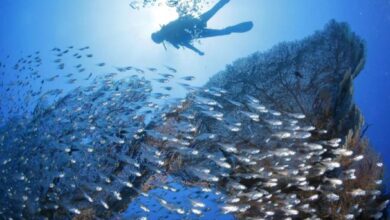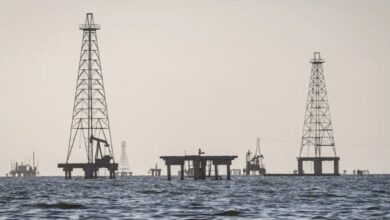We could know the solar system origin! The Hayabusa2 mission was successful
Those responsible for collecting material in the asteroid Ryugu will be two small robots of only 1 kilogram

For the first time in history, the Japanese Aerospace Exploration Agency (JAXA) submitted a statement claiming that two robots launched from the space probe Hayabusa2 landed correctly on a moving asteroid called Ryugu.
Leer en español: ¡Podríamos saber el origen del sistema solar! La misión Hayabusa2 fue todo un éxito
This asteroid orbits "around the sun between Earth and Mars, and is considered Type C, which encompasses those that are rich in organic matter and water," as explained by La Vanguardia.
The space mission began in December 2014 and covered 3,200 million kilometers before reaching the asteroid, which is located 280 million kilometers from the planet, as reported by Infobae. Hayabusa2 is expected to return to the Earth at the end of 2019 and land in 2020.
It may interest you: Eclipses and other 3 astronomical phenomena that you should watch
The two robots, which were launched when reaching a closeness of 55 meters, are called Rover 1A and Rover 1B (together called Minerva-II1) and are characterized by weighing 1 kilogram. The small circular ships have the function of jumping through the asteroid. Thus, "the micro-robots will move by leaps on their surface, reaching up to 15 meters and remaining in elevation up to 15 seconds", as reported by El Horizonte.
Before this, the person in charge of the project, Tetsuo Yoshimitsu, affirmed in the official page that "Although I was disappointed with the blurred image that first came from the rover, it was good to be able to capture this shot as it was recorded by the rover as the Hayabusa2 spacecraft is shown. Moreover, with the image taken during the hop on the asteroid surface, I was able to confirm the effectiveness of this movement mechanism on the small celestial body and see the result of many years of research."
#Increibles fotos de los mini-exploradores que están explorando la superficie del asteroide #Ryugu , llevados hasta allí por la sonda Hayabusa2 @haya2e_jaxa de la @JAXA_en pic.twitter.com/4aSKhMu3Dw
— AstrofísicosEnAcción(@AstrofisicosA) 25 de septiembre de 2018
Minerva-II1: What is its mission?
The main objective of these mini robots is to take samples of the soil of the asteroid to be able to investigate more about the emergence of the solar system and the universe. It is important to clarify that Ruygu is an asteroid "that are among the most primitive bodies of the solar system and, since their composition has not changed since they were formed, they are relics that can provide clues about the origins of our system, 4,500 million ago of years", as stated by La Vanguardia.
Also, Rover 1A and Rover 1B will have company on the asteroid. In October, another mini robot will be released from Hayabusa2, which was created by the German Aerospace Center, called MASCOT. The function of the latter will be to measure the geology of the asteroid, study the temperature and the magnetic field. For this it will use four different tools and it will move in a similar way to the other robots. Also, the ship will eject a fourth robot called Minerva-II2.
You can also read: 7 surprising facts about the moon
Undoubtedly, the main objective of the mission will be to collect material never before studied or seen by man. According to La Vanguardia, between March and April 2019, a small copper projectile will be used to generate an artificial crater. With this it can collect samples of material from below the surface during its last landing.
Hayabusa: the predecessor
At the beginning of the 21st century, the asteroid 25143 Itokawa was chosen to begin the space mission. Hayabusa was launched in 2003 and landed in September 2005, and for 30 minutes was on the surface trying to deploy a device designed for the collection of material, called Minerva.
However, the vehicle failed and was lost. Even so, it was possible to collect material belonging to the asteroid, which arrived on Earth in June 2010 and in November of that same year. JAXA confirmed that the sample belonged to 25143 Itokawa.
LatinAmerican Post | Laura Viviana Guevara Muñoz
Translated from "¡Podríamos saber el origen del sistema solar! La misión Hayabusa2 fue todo un éxito"





